If you’ve been studying Shenzhen, you know that some of the most widely circulated images of the city circa 1980 were taken by Leroy W. Demery, Jr just before the SEZ was approved. Demery uploaded the images to flickr, where they were picked up by historians in Shenzhen, including government exhibitions. In 2013, he recalled that trip in an Insider interview. He returned three years later, and although Demery didn’t leave the general area of the railway station, nevertheless he noted that it wasn’t the same city. Boom!
Yesterday I walked the central area, trying to place Demery’s photographs. I have maps and photographs from the 1980s. I have listened to and read many a story an old Shenzhen story. But finding traces of the area’s historic geography not only requires patience, but also mental deconstruction. One of the most difficult ideas to get past, for example, is the location of “Dongmen.” For many, even those of us who came to Shenzhen in the 1990s, “Dongmen” begins at the plaza near the Shenzhen Theater. The road here splits–Xinyuan road heads northeast, while Jiefang Road is now the Dongmen Pedestrian Street. However, the name of the subway station, “Lao Jie” or “Old Street” is actually a more accurate description of the place.

Below, the plaza in 1980. Demery’s image was taken looking south toward the Xin’an Hotel. My photo is on the square looking east. The Xin’an Hotel is located just outside the right side of the photograph frame.
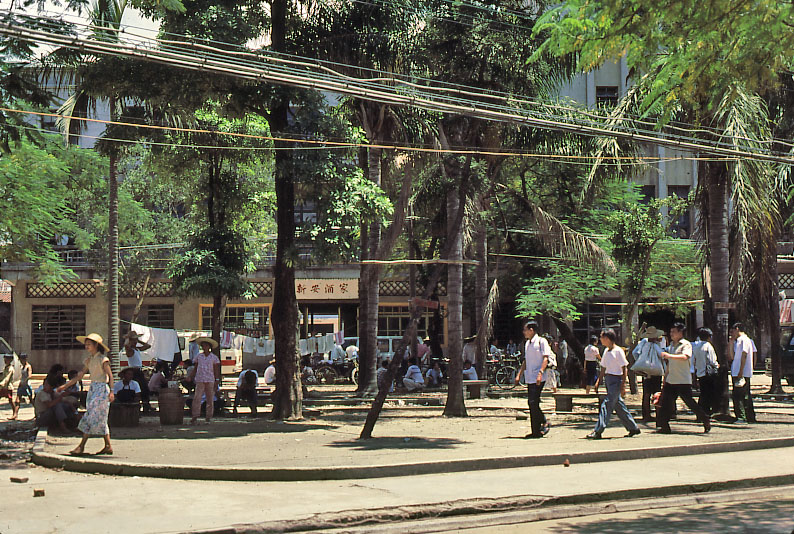
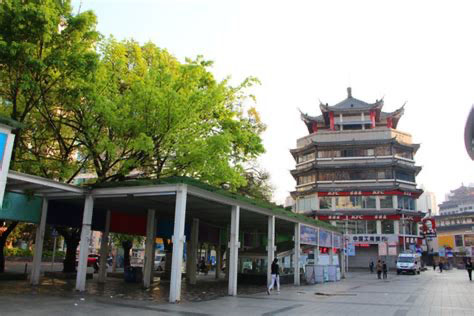
Jiefang Road connected the administrative offices of Baoan County to Shenzhen Town, and that section of road–from Diwang over the Buji River and then across the railway tracks to the cultural center (?) of Baoan County–was the County’s “main street”. The Worker’s Palace, Theater and Yingbin Hotel were all located in this plaza area, a minute’s walk east of the T-intersection with Renmin Road, which at the time was the only other paved road in the area. In the 1980s rush to build a new transportation grid, Jiefang was displaced, eventually giving way to Shennan Road and the new high rises. Students at Caiwuwei Elementary, which was located on Jiefang near the present site of Diwang Tower, for example, were moved to Honggui in 1993.
Below, the two photographs show the T-section from different angles. On the left, Demery’s picture is on Jiefang Road looking east, Renmin Road is to the left. On the right, I stood on Renmin Road, looking north.


Thought du jour, I need to go back and actually stand where Demery did, rather than work from memory. Also, the history of this small plaza is dense, stories spreading out along roads old and new. They eventually reach Dongmen Road, north of Lixin Road the location of the old railway station. This area was “Dongmen,” a reference to the mid 19th century when Shenzhen was a walled market with actual gates. The site of the old bus station at the eastern edge of Shenzhen Town was located in that other “Dongmen” area. Indeed, many historic sites–Nantang, for example–are now mixed use buildings, with first, second and third floors dedicated to commerce and residential towers above. As in Hong Kong, public space in these complexes is located on the rooftops of the commercial section.
And a question du jour: Did “Dongmen” become the more popular name of the area because Laojie was to the east of Shangbu, which became the new city center as a result of 1980s construction? In other words, was Laojie now the East Gate of Shenzhen. When the new city’s offices were set up in Shangbu, which was located in Shangbu to the west of Shenzhen Town, did the historic site of Shenzhen Town become the “East Gate” of Shenzhen City?
And another question: how thick does description need to be? I’m feeling obsessive, but also feel that these are the differences that matter. These forms are the result of ongoing struggles and negotiations to occupy a highly specific space.
Below I have assembled photos that I took of the “Old Street” area yesterday, including Jiefang Road, Renmin North Road, Xinyuan Road and Nantang.


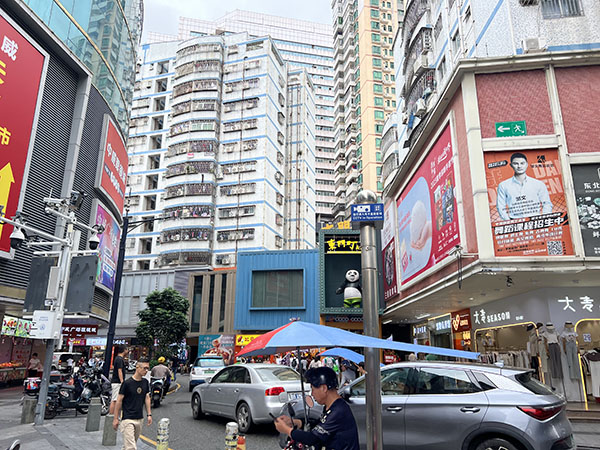


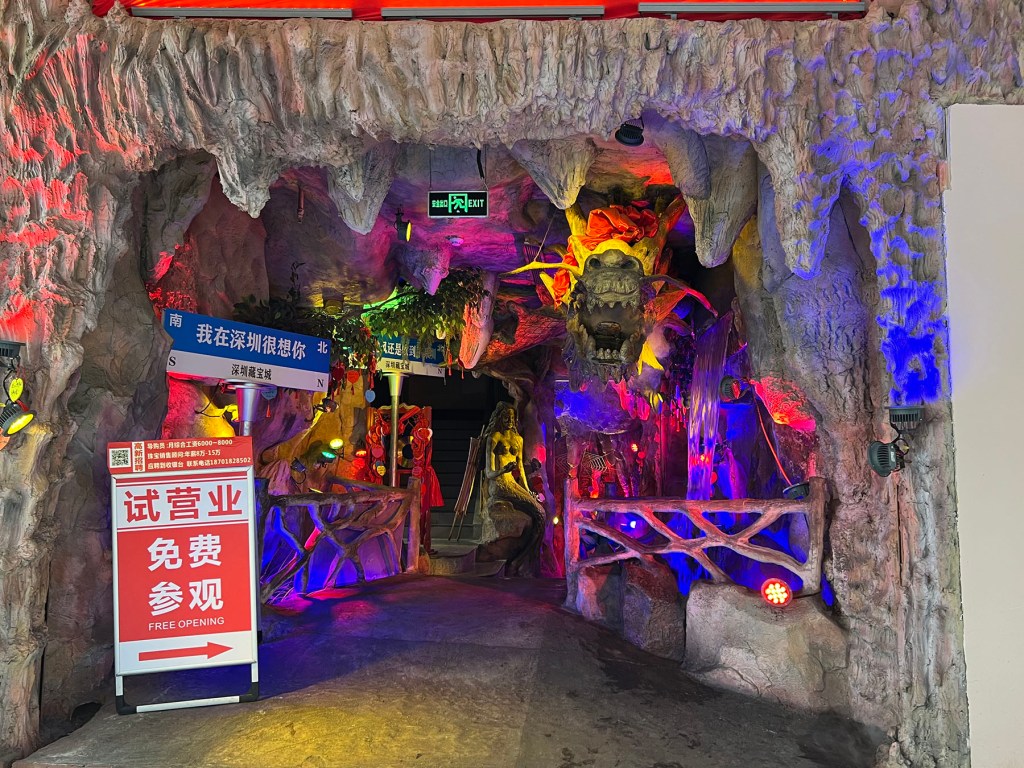

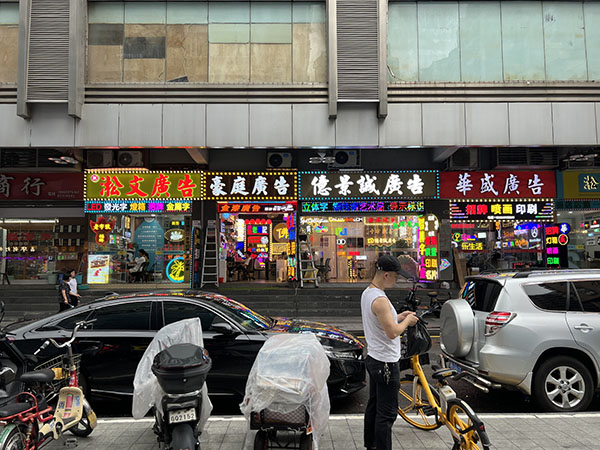



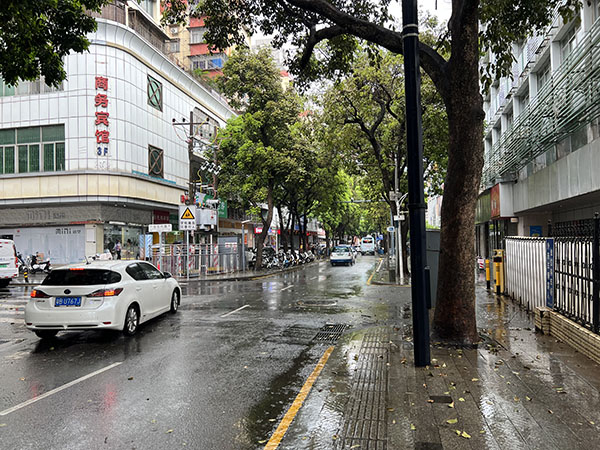

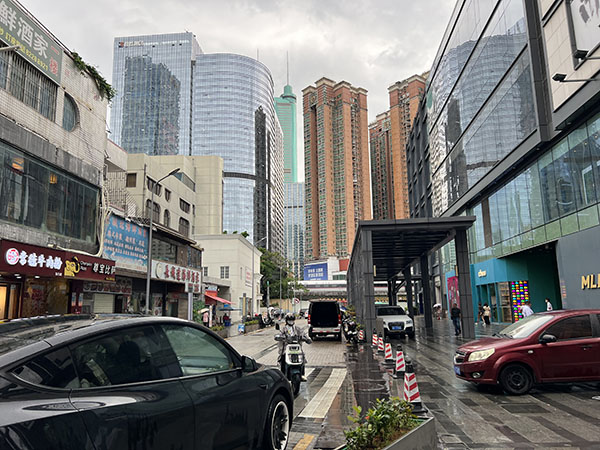





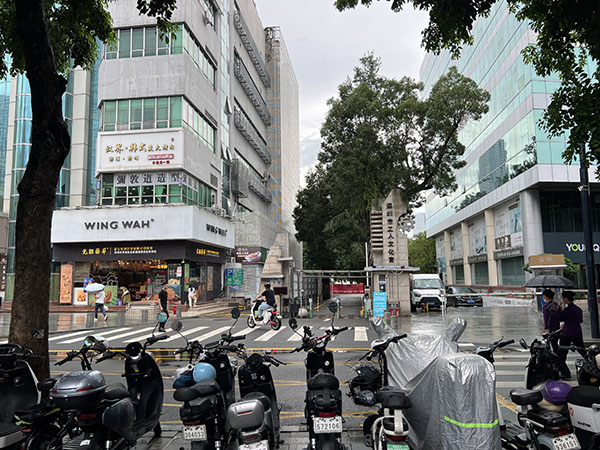

Thanks for the piece, Mary Ann. Fascinating as always. Just curious, in picture 3 in the album, there are some green scaffolding in distance. Do you happen to know what that is all about?
In picture 12, it shows that the “beautification” process only took place on the top two levels of the buildings, as I don’t see the faux grey tiles on the facade below … are they not gonna finish the job…? If this is a finished project, based on what ancient architectural prototype did the planners decide that red columns and tilted roof only exit on the top floors ?
An oberservation of picture 18: interestingly, instead of using “dai luk” (dalu), the placard maker chose “noi dei” (neidi) to refer to Mainland. I always thought that Shenzheners’ understanding of “noi dei” is more of “inland China” (as opposed to coastal), of which they don’t see the SEZ as a part. Maybe that’s no longer the case with the younger generations?
Hi Sice. Picture 3–upgrades. I didn’t cross Dongmen Rd into Hubei Village this walk, but the eastern section is being renewed. Picture 12, 西华宫、文山楼 and McDonald’s all opened circa 1990. These were the first official upgrades to the plaza, creating a new main intersection at Xinyuan and Jiefang Roads. Xinyuan was the new road and Jiefang was “Old Street.” This intersection seems to have been the practical epicenter of much of the development of the plaza, including 门诊部 area, which was on the other side of the train tracks (hee hee hee). Picture 18, the celebratory plaques were put in sometime after the 2015. I’ll go back and take pictures of all of them to confirm. So there’s a post 2014 re-historicization of Shen Kong at play. Also, most of the tourists who visit Dongmen are from Neidi, so maybe an (inadvertant) marketing strategy along the lines of “Everybody’s Shenzhen”? Thanks for calling that detail to my attention.